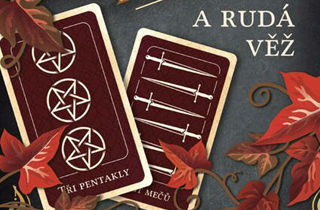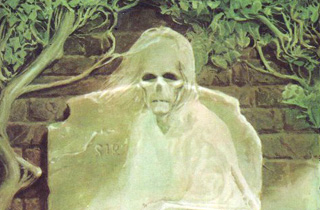
Fresh off the back of a successful workshop session on Planning Your Novel at Derby Quad, I thought it’d be useful to turn it into a blog post, as part of my occasional series on the writing process. This particular session was great fun, taking the form of a Q&A with the estimable Alex Davis. The workshop wasn’t just about typical writing advice, but specifically about the methods I’ve devised to aid my planning, with the overall theme of: everyone’s different! Find a method that works to you even if it seems weird…
Q. Were you always an author who planned your stories, or did you ever try the ‘pantster’ approach of just getting stuck in?
A. I was a total pantser, and still am a bit. My first novel had the briefest imaginable outline, although I was 100% set on the mid-point and the ending – it took a lot of working out to get there. It also took me 2 years to complete…
The reasons I started taking planning more seriously were (a) I began writing on a contract, and therefore had a deadline to hit, and (b) I started adding more crime/mystery elements, which really needed more structured planning.
Q. What difference did you notice to your process when you had a more solid plan for the book?
A. Although I still prefer writing the book sequentially, having a detail plan means that if I get stuck on a section, I can skip ahead to another bit, because I know at least roughly what needs to happen in any given scene. It doesn’t make me a better writer or anything, but it does make me more productive when I can just get on with stuff and not spend ages procrastinating, or trying to remember why I wrote that random scene, etc.
Q. What is the very earliest stage of your planning process?
A. Premise – or concept, then premise, but the two are basically intertwined. From the premise comes the question ‘is there a story there?’ If yes, I flesh it out into at least a paragraph, and write some character notes, then bounce that idea off someone – usually my agent. Usually I just know if the book will work or not, but If he thinks it’s got legs, I can start work on it properly with confidence. All of this is usually handwritten. I write things down all the time in notepads, and sometimes when I read those notes back some ideas leap out and take on a life of their own.
This leads to brainstorming, which usually takes the form of a mind-map on a big flipchart page (or several! The mind-map for Iscariot Sanction spilled off the flipchart and ended up being transferred to a roll of wallpaper…)
Q. How does your planning process tend to progress? What steps do you always take before you start writing?
A. I’ve found a groove finally, which I’ve used on my last three books. This goes:
- Premise
- Elevator Pitch – or, the story in a nutshell.
- Flipchart 1: Mind Map. (See my earlier blog on flipchart planning!)
- Flipchart 2: The plot. Every scene gets a thought bubble, and these get linked with arrows and character notes, and scribbled out and changed several times until only my dog can understand it. From this is born:
- Synopsis (usually 2 pages) and character notes (usually a short paragraph each)
- Long synopsis with full chapter breakdown (not for dissemination). Some writers like to plot a ‘beat sheet’ first, but personally I find that a bit too formulaic – like, ‘this character moment has to occur exactly 75% through the novel’ etc. Gets used in screenwriting a lot.
If any sections are particularly tricky, like a whodunit where you have to track every character’s movements simultaneously, I do a third flipchart, which is the detail map of one or more chapters. Some more technologically minded folk use a spreadsheet for this.
I then set up a fresh manuscript – my favourite part. It’s like sleeping in clean sheets… Into this I paste each chapter header onto a different page. I bullet point these sections, adding detail if necessary – which characters are present? Whose POV is it? What clue do they need to find to get to the next chapter? How do they find that clue?
I start writing under the chapter descriptions, crossing off each point as I cover it. As I write, any additions I make (usually lots), or things I change or delete, get added into those chapter descriptions, so that when I start the chapter, it’s the most up-to-date version of the plan. If I do decide to change anything during writing, I go back and add comments to myself to change it in editing. I NEVER tinker with earlier chapters until editing begins – always forward, never backwards.
Q. Some people find that planning and plotting in detail can take the ‘fun’ out of the writing – do you ever feel that?
A. I can understand that, and it can be the case. For me, planning a story is working out what story you’re going to tell. The first draft is then telling that story to yourself. The second draft is finding the best way to share it with the reader.
The problem is, if you put too much detail into the plan, so there’s nothing left to work out as you write, you sort of tell yourself spoilers, and it can make you lose enthusiasm for the work. Once a story is on paper and out of your head, your brain starts looking for new shiny ideas instead. This is probably why GRRM hasn’t – and perhaps won’t – finish A Song of Ice and Fire. He’s sat down with the TV execs and gone through his story in detail. He’s told the story in full, and now he’s lost forward momentum on the actual hard graft of writing the thing. That’s where a good work ethic comes in, because some days you just need to grind out those words!
Q. Does the plan ever change as you go along, or do you tend to deviate much?
A. Every damn time. And that’s a good thing. I saw a thing on social media recently that put the different types of ‘planner’ into a D&D alignment chart. I am a ‘lawful pantser’, which I suppose means that, no matter how meticulous the plan, I always leave myself enough rope to hang myself.
Q. What do you do if the story does suddenly starts going in another direction from the plan?
A. This happens a lot, and you have to have honest conversations with yourself. If this really a ‘better’ idea, or just a ‘new’ idea that’s turned your head. If it’s genuinely better, then maybe look ahead to the next big milestone and work out the butterfly effect: if you change this thing here, can you still pull the story back on track, or do you have to alter everything? If it’s the latter, then maybe you aren’t telling the same story any more, and that can be a real problem, especially if you’ve sold the book and the editor is expecting one thing but you want to deliver another.
My rule of thumb is to look at the ‘beat sheet’ – even if you don’t strictly follow the formula, every story supposedly has 15-18 traditional beats, and it’s worth knowing what those beats are in your own story. If a change ends up altering 5 or 6 of those beats, that’s a huge change to the synopsis, and it might be a good idea to really stop and think before diving in.
Q. What advice would you give to an author who’d never tried to plan anything out before in detail?
A. Don’t feel like you have to. I think if I wrote a less complex book, I’d do less planning – the level of my chapter breakdown method for Destiny’s Call, for example (YA fantasy) was about a quarter as detailed as The Red Tower (Sherlock Holmes pastiche). Do what works for you. I wrote my first published book with barely anything except some incoherent notes in a pad. The second book had a synopsis but not much more. It’s doable, you just might find you’re not as efficient without a plan.
Q. Do you tend to think in terms of three-act structure when you are planning?
I really prefer the four-act structure. The Lazarus Gate is the most obvious example, where the mid-point of the book is really the point where everything changes. The hero has to come to terms with this new situation before they can find a solution. I think I always start with three acts when I’m writing that initial synopsis, but it always comes back to four… The main difference is that after the mid-point twist, you don’t just continue the rising tension, but have to come up with a whole new set of obstacles because the twists was such a game-changer.
Q. Does the plan help where it comes to things like writing synopses and ‘pitches’?
A. I always start with those things, because for me the plan has to be born from the pitch, which has to be born from the premise. BUT there’s a hidden second stage of pitching if you’re selling a completed manuscript (rather than selling on spec).
The pitch and synopsis that I bounce off my agent usually gives rise to lots of ideas, which then go into a plan. Sometimes the synopsis will change a few times as a result.
When the book is finished, there will almost certainly be differences between the manuscript and the pitch. So, I retro-fit the pitch and short synopsis to accurately reflect the content.
This is where the chapter breakdown really comes into its own – because I’ve updated the chapter plan as I’ve gone along, I can simply condense each chapter into a sentence or two, making it as pithy and exciting as possible, and BOOM: instant synopsis that’s fit for the publisher’s eyes!
Q. Do you feel like you can change the plan once the publisher has agreed it with you?
A. If they’ve specifically signed off on a detail plan – often the case with licensed fiction – then any changes to plan really should be run by the editor first. Normally though, a publisher will sign off on a synopsis that doesn’t include every little detail, so there’s some freedom. If you go really off-piste, like kill the protagonist when the plan said they were going to ride off into the sunset happily, or you decide they wake up and it’s all a dream, the editor will probably have something to say. They’re paying for it, after all – they should know broadly what their money is buying.
That’s it – hopefully you find some useful bits in there. Remember, this is just my own planning journey and everyone is different!










Leave A Comment